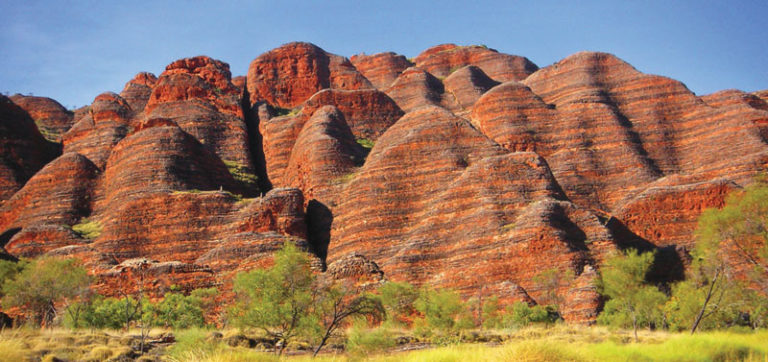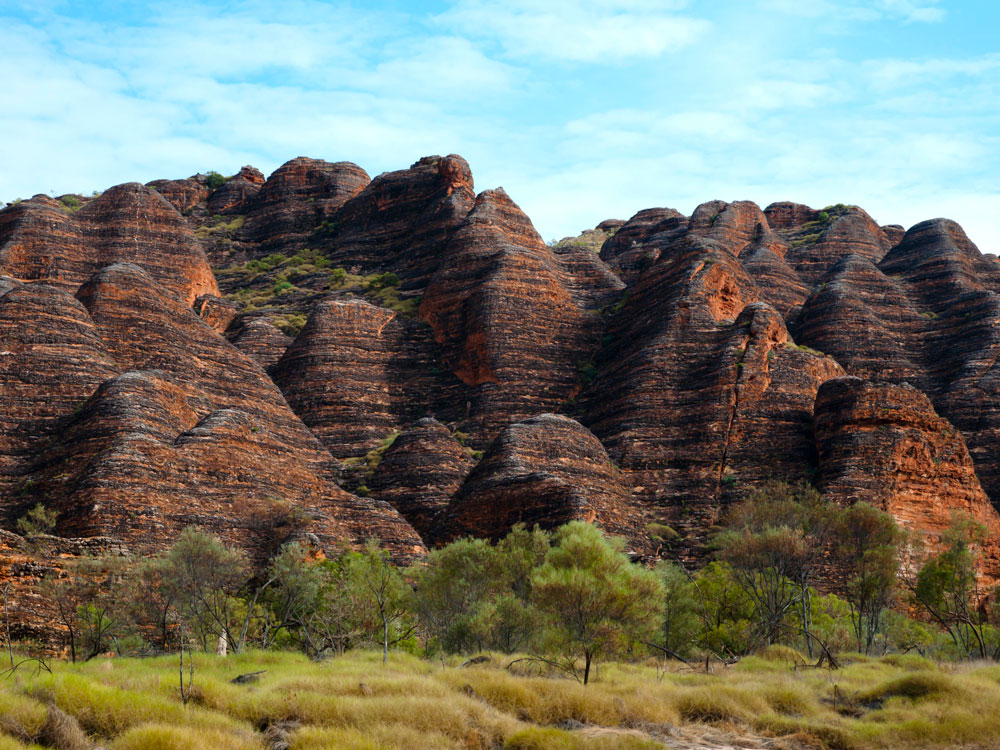Outback Icons: Unveiling the Resilience of Australian Trees
Outback Icons: Unveiling the Resilience of Australian Trees

The Australian outback, a vast and unforgiving landscape, is often painted as a barren wasteland. Yet, amidst the red dust and scorching sun, a remarkable array of trees stand tall, defying the odds and showcasing incredible resilience. These outback icons are more than just flora; they are symbols of survival, adaptation, and the enduring spirit of the Australian bush.
A Symphony of Survival: Adapting to the Outback’s Harsh Realities
Related Articles: Outback Icons: Unveiling the Resilience of Australian Trees
- Embracing Tradition: A Guide To Indigenous Girl Names
- The Enduring Elegance Of Australian Fir Trees: A Comprehensive Guide
- Beyond The Bush Tucker: Unveiling The Intricate World Of Aboriginal Food Taboos
- The Stolen Generation: A Legacy Of Trauma And Resilience
- The Leaping Spirit: Exploring The Significance Of Kangaroos In Australian Aboriginal Art
The outback’s harsh conditions – scorching temperatures, limited rainfall, and nutrient-poor soils – pose a formidable challenge for any living organism. Yet, the trees that thrive here have evolved ingenious strategies to survive.
1. Deep Roots, Deep Resilience:
Many outback trees possess deep, extensive root systems that tap into groundwater reserves, ensuring access to vital moisture even during prolonged droughts. This remarkable adaptation allows them to thrive in arid regions where surface water is scarce. The iconic Mulga (Acacia aneura), for example, can send its roots down over 30 meters, reaching deep into the earth for sustenance.
2. Drought-Resistant Leaves:
To conserve precious water, outback trees have developed unique leaf structures. Some species, like the Coolibah (Eucalyptus coolabah), have small, leathery leaves that minimize water loss through transpiration. Others, like the Ghost Gum (Eucalyptus papuana), have leaves that are covered in a waxy coating, further reducing water evaporation.
3. Strategically Timing Growth:
Many outback trees have adapted their growth cycles to coincide with the limited rainfall. For instance, the Desert Oak (Allocasuarina decaisneana), a resilient species found in the Simpson Desert, grows rapidly during the rare periods of heavy rain, storing water in its trunk and branches to survive the ensuing dry spell.
4. Fire-Resistant Bark:

The outback is prone to wildfires, but some trees have evolved thick, fire-resistant bark that protects their vulnerable cambium layer. This allows them to survive even intense blazes, enabling them to re-sprout and regenerate after the flames subside. The Red Mallee (Eucalyptus erythrocorys), with its thick, corky bark, is a prime example of this adaptation.
5. Symbiotic Relationships:
Outback trees have forged intricate symbiotic relationships with other organisms, further enhancing their survival. For example, the Spinifex (Triodia), a dominant grass in the outback, forms a symbiotic relationship with mycorrhizal fungi. These fungi help the Spinifex access nutrients from the soil, while the Spinifex provides the fungi with sugars produced through photosynthesis.
A Tapestry of Species: The Diversity of Outback Trees
The Australian outback is a diverse landscape, and its tree populations reflect this variety. From the towering giants of the Redwood (Eucalyptus camaldulensis) to the gnarled and twisted River Red Gum (Eucalyptus camaldulensis), each species has its own unique story to tell.

1. The Iconic Eucalyptus:
The Eucalyptus genus dominates the outback, with over 700 species adapted to various conditions. These iconic trees provide food and shelter for wildlife, and their leaves are a vital source of nectar for honeybees. The Redwood (Eucalyptus camaldulensis), found along watercourses, is a towering giant, reaching heights of up to 60 meters. Its timber is highly valued for its durability and strength.
2. The Adaptable Acacia:
The Acacia genus, commonly known as wattles, is another prominent feature of the outback. These trees are highly adaptable and can tolerate extreme temperatures and limited rainfall. The Mulga (Acacia aneura), with its dense, spiny foliage, is a dominant species in arid regions. It provides valuable shade and shelter for animals, and its wood is used for fuel and construction.
3. The Drought-Resistant Casuarina:

The Casuarina genus, commonly known as she-oaks, is renowned for its resilience in arid environments. The Desert Oak (Allocasuarina decaisneana), with its needle-like leaves and deep root system, is a symbol of survival in the Simpson Desert. It is a vital source of food and shelter for desert animals.
4. The Unassuming Triodia:
The Spinifex (Triodia), a tough, spiny grass, is a dominant plant in the outback. While not technically a tree, its dense tussocks provide valuable habitat for a variety of animals. It also plays a crucial role in stabilizing the soil and preventing erosion.
5. The Rare and Endangered:
The outback is home to a number of rare and endangered tree species, highlighting the importance of conservation efforts. The Boab (Adansonia gregorii), a majestic tree with a massive trunk, is found in the Kimberley region of Western Australia. Its unique appearance and cultural significance make it a symbol of the outback’s biodiversity.
The Importance of Outback Trees: More Than Just Flora
Outback trees are not just a beautiful sight; they play a vital role in the ecosystem. They provide shade and shelter for animals, stabilize the soil, and contribute to the water cycle. They are also a vital source of food and medicine for Indigenous Australians.
1. Habitat and Shelter:
The dense foliage and hollow trunks of outback trees provide shelter for a wide range of animals, including birds, reptiles, and mammals. The Mulga (Acacia aneura) is a particularly important habitat for birds, while the River Red Gum (Eucalyptus camaldulensis) provides shelter for bats and other nocturnal creatures.
2. Soil Stabilization and Erosion Control:
The extensive root systems of outback trees help to bind the soil, preventing erosion from wind and rain. This is particularly important in arid regions, where the soil is often loose and vulnerable to degradation. The Spinifex (Triodia) is a key species in soil stabilization, forming dense tussocks that protect the soil from erosion.
3. Water Cycle and Groundwater Recharge:
Outback trees play a vital role in the water cycle, intercepting rainfall and reducing runoff. Their deep roots also contribute to groundwater recharge, ensuring a reliable water source for the ecosystem. The Redwood (Eucalyptus camaldulensis), with its extensive root system, is particularly effective in recharging groundwater reserves.
4. Cultural Significance:
Outback trees hold deep cultural significance for Indigenous Australians. They are a source of food, medicine, and materials for tools and shelter. Many species are also associated with important stories and traditions. The Boab (Adansonia gregorii), for example, is considered a sacred tree in some Indigenous cultures.
Threats to Outback Trees: Facing the Challenges of Climate Change
The resilience of outback trees is being tested by the effects of climate change. Rising temperatures, increased drought frequency, and more severe bushfires are putting immense pressure on these iconic species.
1. Drought and Water Stress:
Prolonged droughts are becoming more common, putting immense stress on outback trees. The lack of rainfall can lead to water stress, making them vulnerable to diseases and pests. This can weaken the trees and make them more susceptible to fire.
2. Bushfire Frequency and Intensity:
Climate change is contributing to increased frequency and intensity of bushfires, posing a significant threat to outback trees. The combination of drought and high temperatures creates ideal conditions for wildfires, which can devastate entire forests.
3. Invasive Species:
The introduction of invasive species, such as feral goats and rabbits, can have a devastating impact on outback trees. These animals can graze heavily on seedlings and saplings, preventing regeneration and threatening the long-term survival of certain species.
4. Land Clearing and Habitat Loss:
Land clearing for agriculture and urban development is another major threat to outback trees. The loss of habitat can disrupt ecosystems and fragment populations, making trees more vulnerable to threats.
Conservation Efforts: Protecting Outback Icons
Recognizing the vital role of outback trees, numerous conservation efforts are underway to protect these iconic species. These efforts focus on:
1. Fire Management:
Controlled burns and other fire management strategies are being implemented to reduce the intensity and frequency of bushfires. This helps to protect trees from fire damage and promotes regeneration.
2. Pest and Disease Control:
Efforts are underway to control invasive species and pests that threaten outback trees. This includes measures to eradicate feral animals and manage diseases.
3. Habitat Restoration:
Habitat restoration projects are being undertaken to restore degraded areas and create new habitats for outback trees. This involves planting native species, controlling erosion, and restoring watercourses.
4. Community Engagement:
Community engagement is crucial for conservation efforts. Raising awareness about the importance of outback trees and encouraging sustainable practices is vital for their long-term survival.
5. Research and Monitoring:
Ongoing research and monitoring are essential to understand the impacts of climate change and other threats on outback trees. This information is vital for developing effective conservation strategies.
FAQ About Trees in the Australian Outback:
Q: What are the most common tree species in the Australian outback?
A: The most common tree species in the Australian outback include Eucalyptus (including Redwood and River Red Gum), Acacia (including Mulga), Casuarina (including Desert Oak), and Spinifex.
Q: How do outback trees survive in such harsh conditions?
A: Outback trees have evolved unique adaptations to survive scorching temperatures, limited rainfall, and nutrient-poor soils. These adaptations include deep root systems, drought-resistant leaves, strategically timed growth cycles, fire-resistant bark, and symbiotic relationships with other organisms.
Q: What are the threats to outback trees?
A: Outback trees face numerous threats, including climate change, drought, bushfires, invasive species, land clearing, and habitat loss.
Q: What can be done to protect outback trees?
A: Conservation efforts to protect outback trees include fire management, pest and disease control, habitat restoration, community engagement, and research and monitoring.
Q: Why are outback trees important?
A: Outback trees play a vital role in the ecosystem, providing habitat and shelter for animals, stabilizing the soil, contributing to the water cycle, and holding cultural significance for Indigenous Australians.
The Australian outback is a testament to the resilience of life. The trees that thrive in this harsh environment are a source of inspiration, reminding us of the extraordinary adaptations that nature can produce. By understanding the challenges they face and supporting conservation efforts, we can ensure that these iconic species continue to grace the Australian landscape for generations to come.

Closure
Thus, we hope this article has provided valuable insights into Outback Icons: Unveiling the Resilience of Australian Trees. We hope you find this article informative and beneficial. See you in our next article!


